Is having a throw line on a belt a good idea?
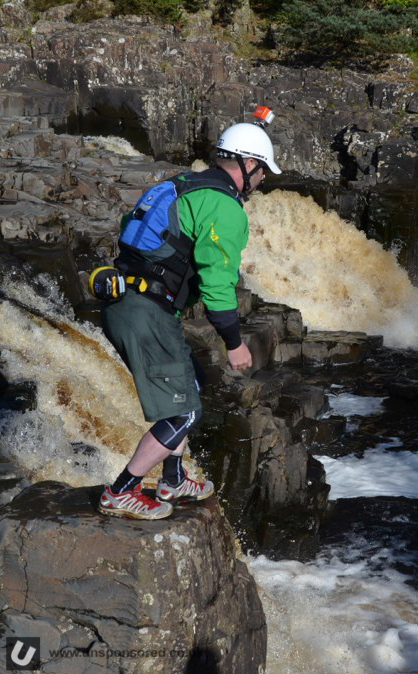
Many years ago PFDs were produced with rear pockets to accommodate a throw bag. Many of those original bags were a flat envelope type and were pretty compact meaning they would fit in the PFD easily. Unfortunately they didn’t throw that well compared to cylindrical bags, had relatively short lengths of thin rope and repacking could be a nightmare. That said it was better to have one than not at all.
As bags got bigger the PFD designers moved away from incorporating a special pocket into the PFD so most boaters carried the larger cylindrical bag based throw lines in the boat. In the past these bags were often placed behind the seat jammed between the air bags and the backrest (if the boat had one!).
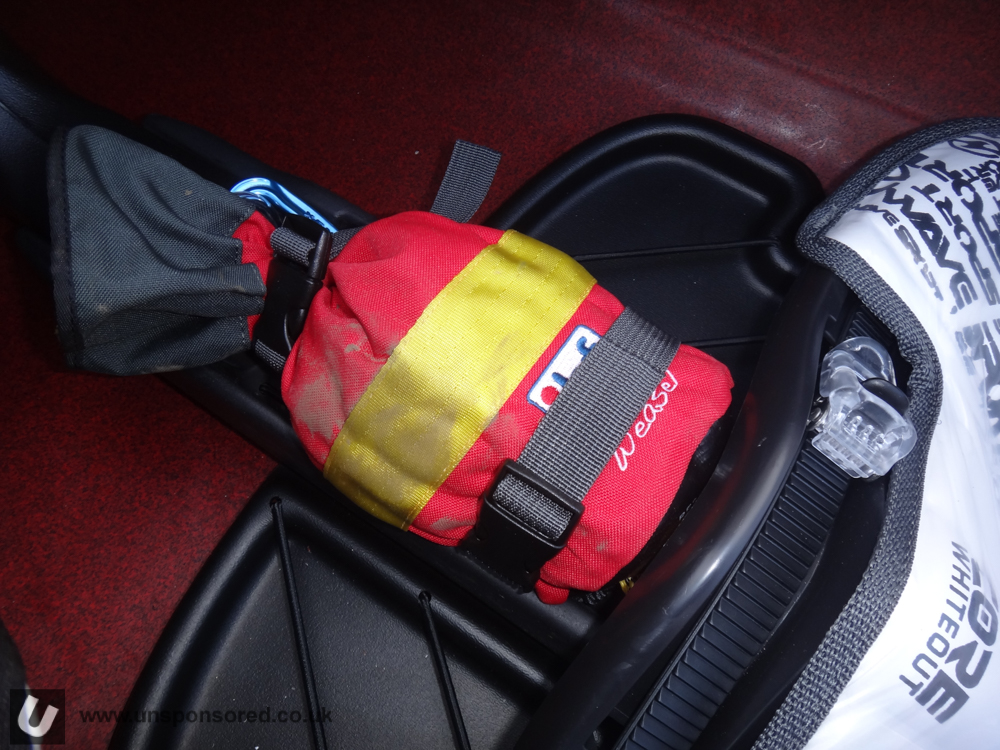
Newer designs of playboats and later river/creek boats incorporated drink bottle bungee cords and they proved to be ideal for holding a small to medium sized throw bag. Newer boats even have dedicated throw line holders.
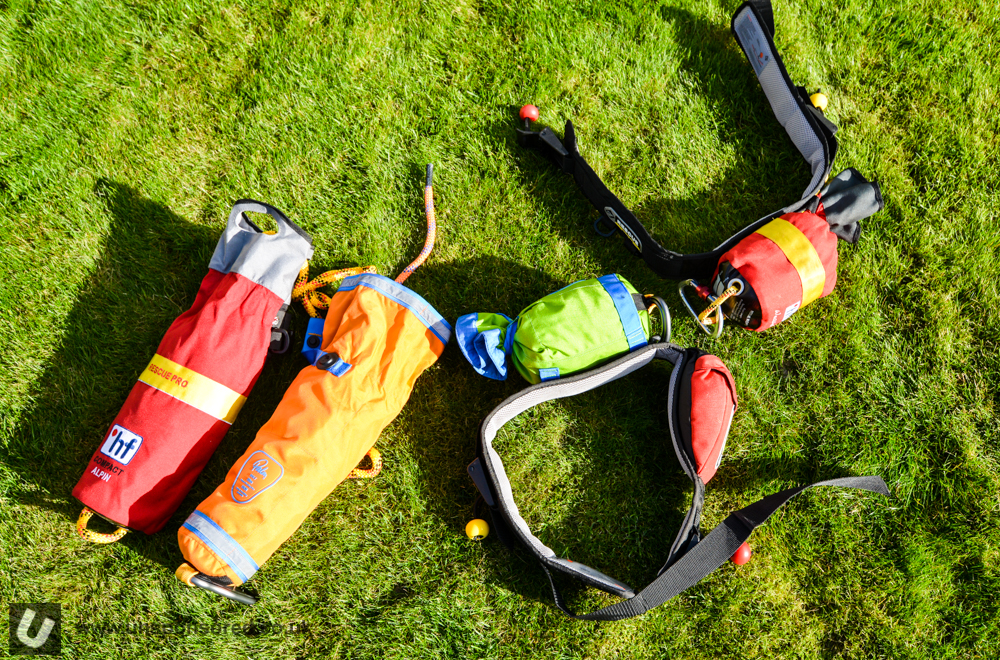
Fast forward a few years and you now see quite a few paddlers wearing a throw line bag on the waist attached to a dedicated belt often referred to as a rescue belt. This probably stems from a number of whitewater raft guides using the same technique to carry a bag. The advantage of this is that the line is easily at hand and is with you at all times. Even when you may need to leave your boat!
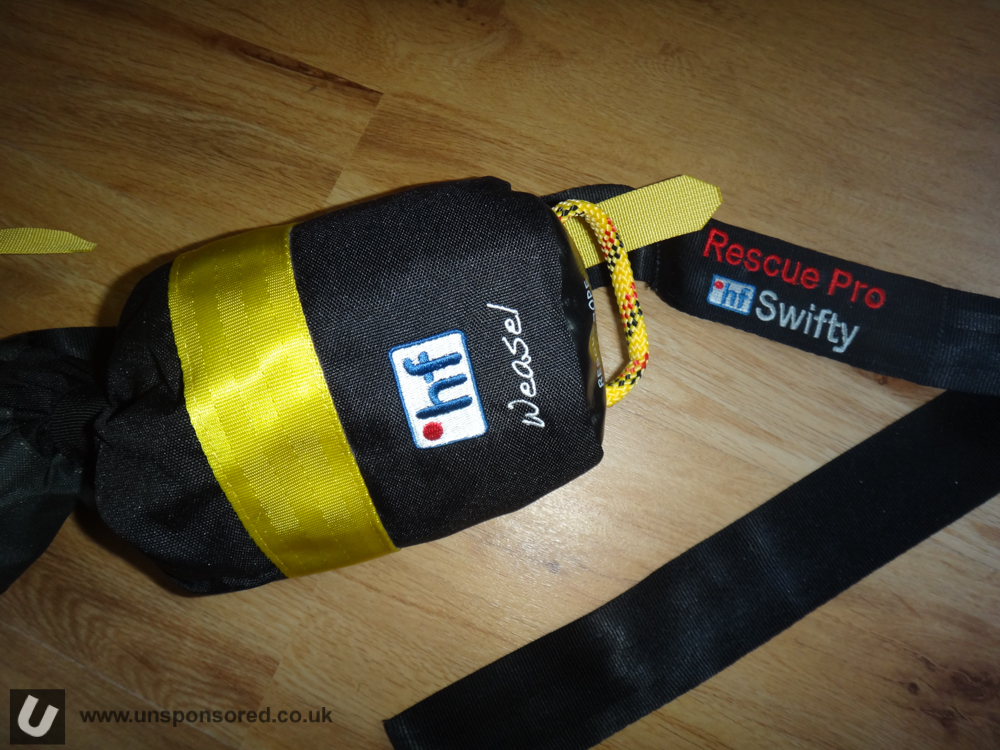
I really like belt systems but not everyone does. I’ve tried a few different belts and throw line combinations over the years. The ones shown in these images represent my current setup. I mix and match depending on where I am off to.
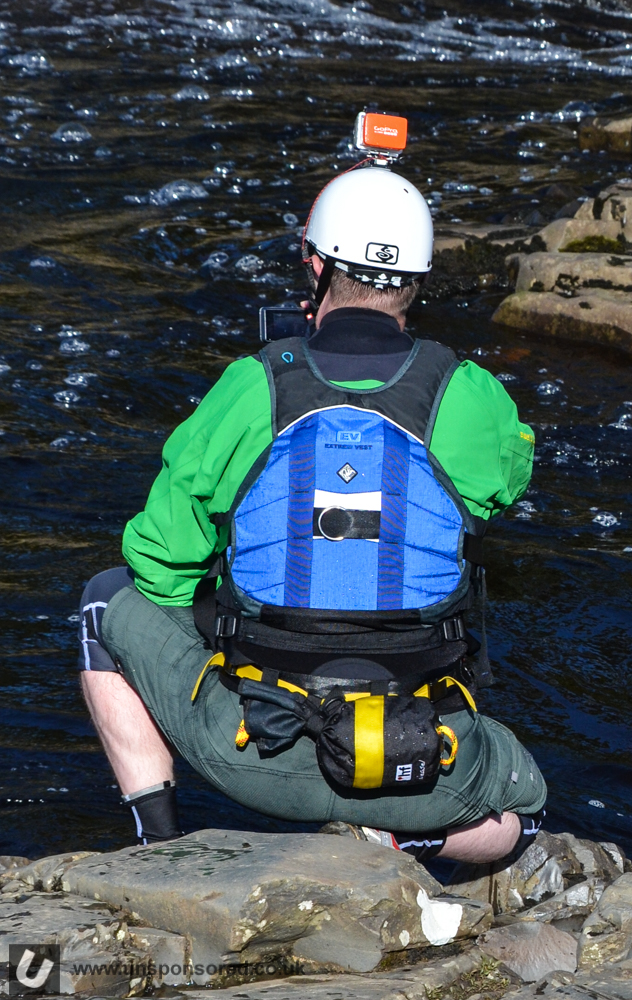
The first was an HF Rescue Pro (Swifty) belt. It’s a dead simple design makes it very easy to use and there is very little bulk. The yellow tape/strap that holds the bag to the belt can be released from either side.
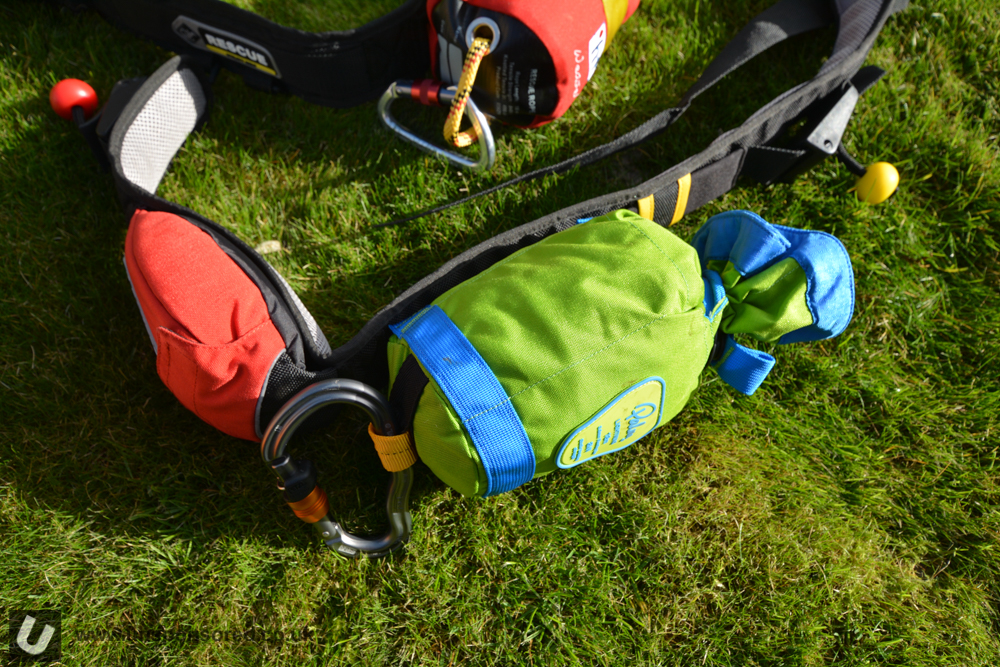
The second belt I tried was the Palm Zambezi belt. This incorporates a facility to carry a throw bag and a small pouch that holds a tow line. The most recent one has been the Palm rescue belt. It’s straight forward designs shares many features with the HF Rescue Pro belt, however the Palm belt is padded and is far more comfortable to wear.
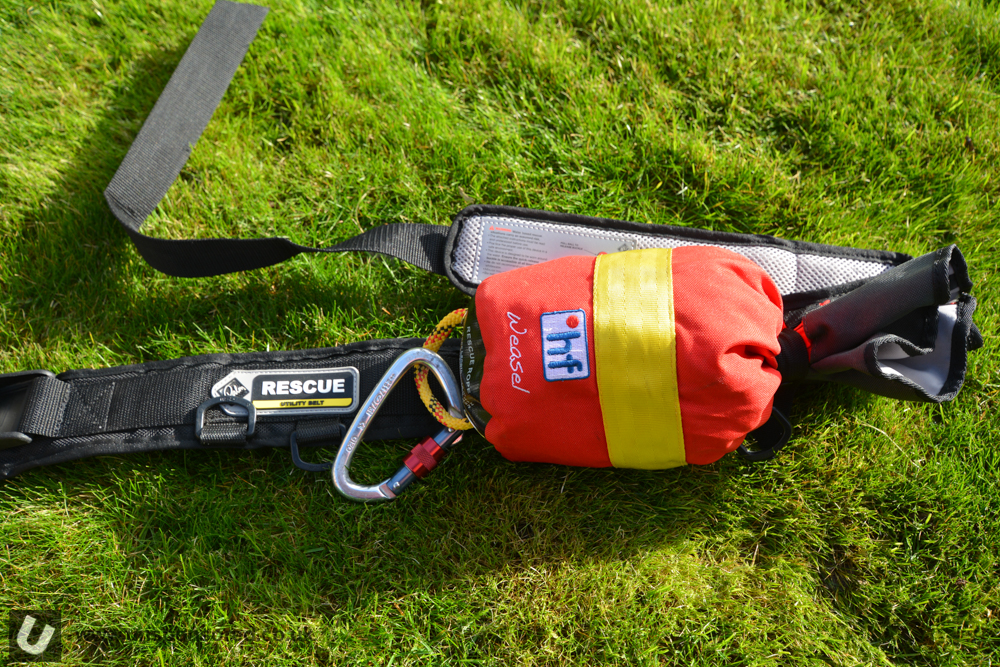
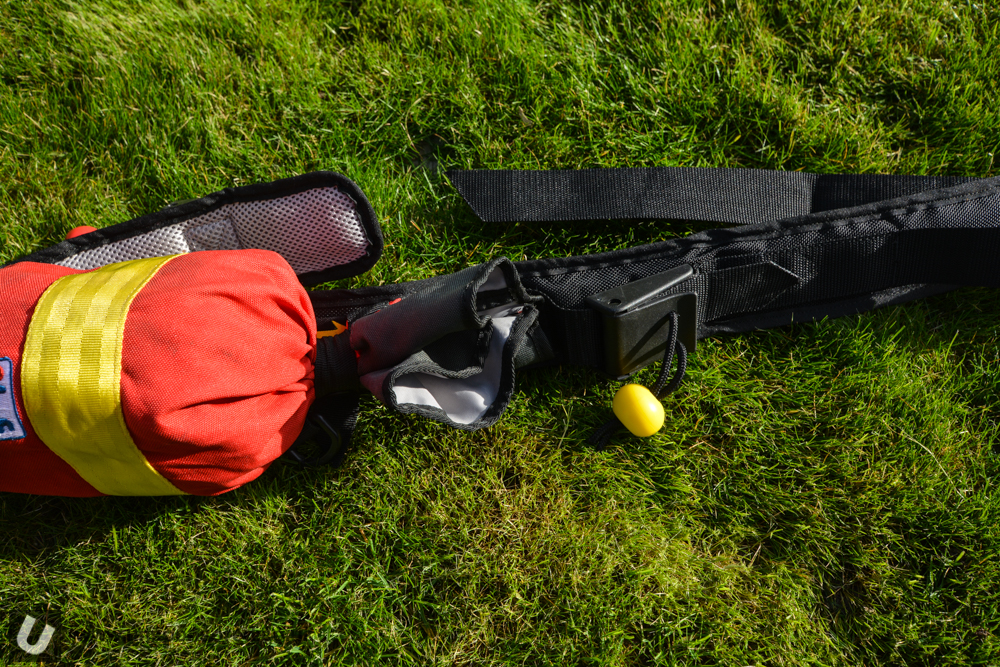
Thr principle on most belts is pretty much the same. The belt itself will have some sort of quick release buckle. Usually this has a pull cord and toggle that makes releasing the belt super easy. Bright colours are often used on the critical quick release areas. In the images within this post the toggle is yellow.
To attach a bag to the belt a smaller band of tape with a quick release buckle is attached to belt. In some cases the quick release is at both ends and in others it is just the one end.
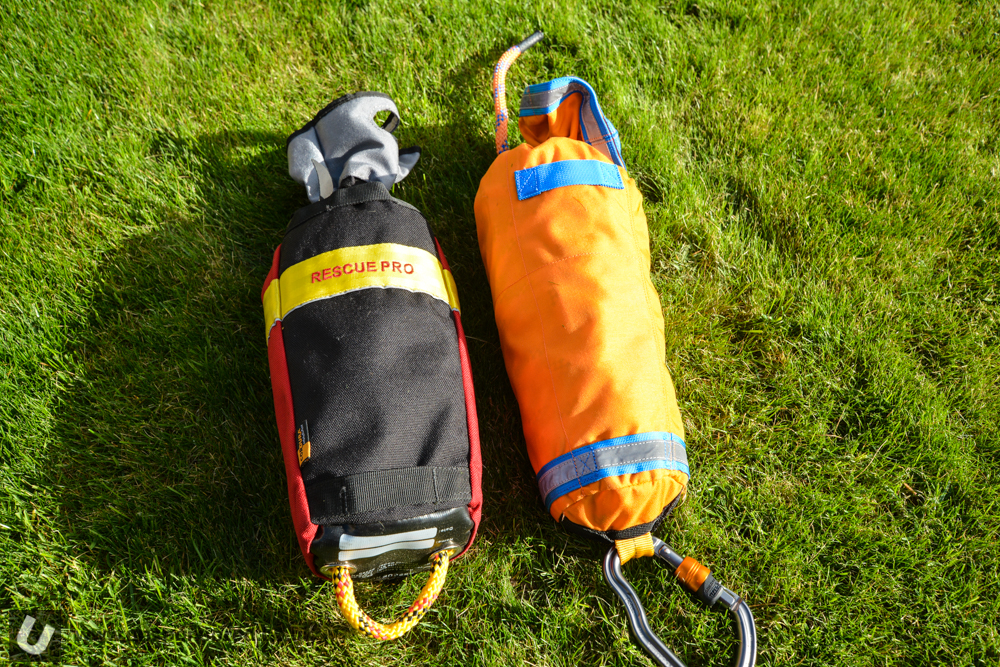
The HF Weasel’s arrangement for the loops is a little bit difficult to thread compared to the Palm Lightning when the bag is done up.
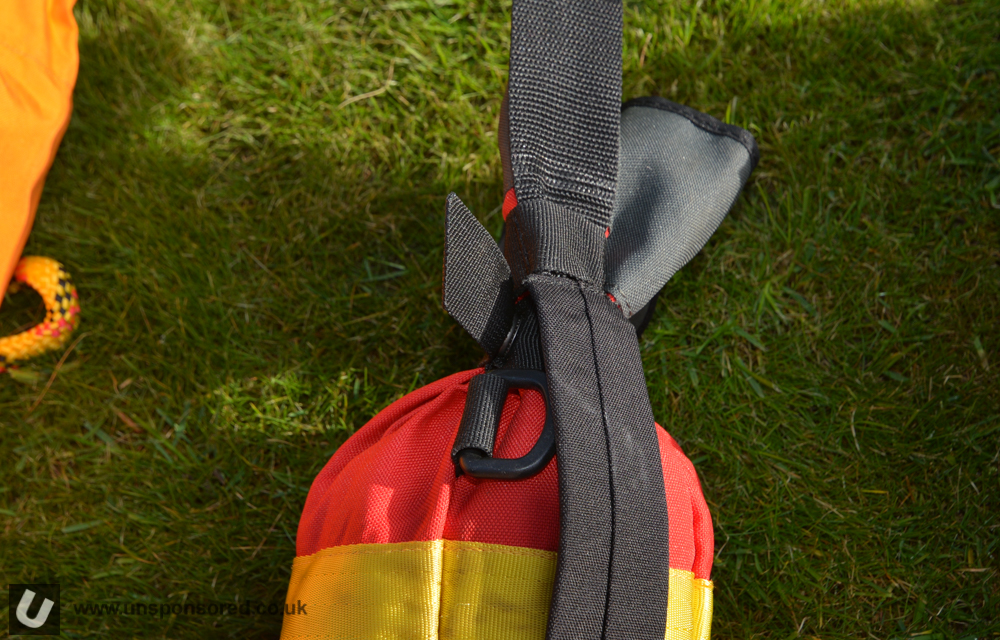
Most modern throw line bags have two loops of tape that allow them to be attached to the belt as shown above. This system is really effective as it keeps the bag secure whilst at the same time being easy to release. In case of a snagging issue the bag or full belt can be quickly ditched.
I have had throw line bags that have spontaneously ejected most of the rope out of the bag, thankfully this has been when I have been bank side but it could have quite easily happened on the water. It is therefore essential that the bag is not over stuffed with rope, that it is packed well and that the means by which the neck is sealed is the best it can be. I personally would not want to use any bag that only had a Velcro based closure system.
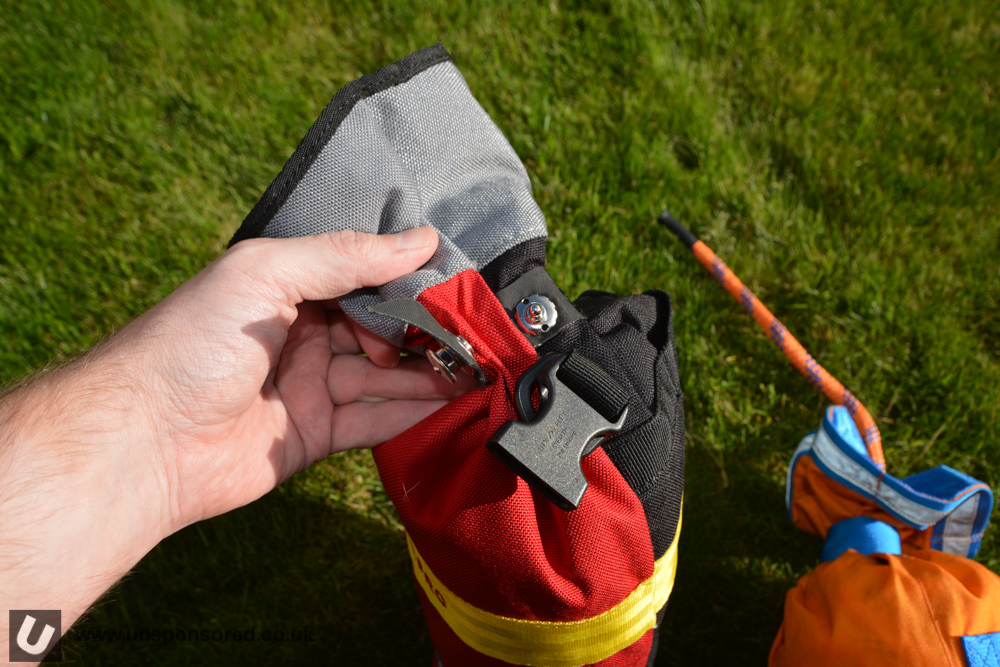
This HF system shown above and the Palm magnetic bayonet lock work really well. The HF one shown here is featured on the larger HF bags. Smaller bags such as the HF Weasel have a large metal press stud to keep the bag closed and again works really well.
You also need to consider the size of the throw line bag that you are going to carry on a belt. More rope, thicker rope it all adds weight and bulk. If worn on a belt this can restrict your movement in the boat depending on the bag, where you wear it and the shape of the boat. I tend to where a smaller bag on the belt and carry a larger bag in the boat.
Before going out on the water it is a good idea to try things out including the quick release systems.
We’d be really interested to know you thoughts. Do you use one? Have you in the past but changed your mind? Do you think it’s a good or bad idea?















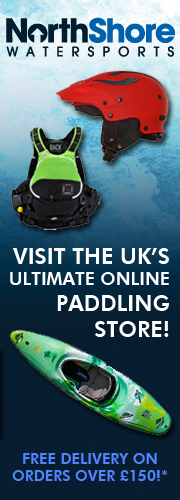
One waist worn throw bag that incorporates a quick release buckle that is not in this article is The H2O Sharp Shooter designed and sold by Aaron Peeler. Aaron is also an ACA SWR IT with years of experience in rescue. I own several of these bags and use them in my SWR courses. By far the most durable and well made waist bag I have found. The cylindrical design of the bag lends itself very well to being able to make a highly accurate throw. I much prefer a waist bag as it is with me at all times when I am out of the boat. In an emergency I am not losing time digging around in my boat for a bag. One quick pull on the buckle and the bag is in my hand. Do yourself a favor and look up his bags. H2O Rescue Gear.
Overall, I think having a bag on you all the time is the way forward as there are definitely times where valuable seconds can be saved by not faffing around getting bag from boat. Also, you can help yourself in certain situations as a swimmer – e.g. in a cave or walled out eddy where you may be able to throw a bag out or up.
I prefer the small astral bag that fits in the green jacket (in addition to big bag in the bottle holder of kayak). It feels a little bulky at first, but you get used to it and then don’t even notice it.
I find the waist bags annoying for kayaking due to the bulk above the skirt when sitting in kayak. Really good for other water activities though (rafting / river boarding / canoeing). Best waist bag I’ve used is http://www.nrs.com/product/45108.02/nrs-pro-guardian-wedge-waist-throw-bag
as it flaps around less and is much cleaner than other designs but is still easy to dry as it’s a mesh bag that you put inside the durable belt pouch.
Final point, whatever the system you use, always carry a bigger bag in your boat (during tricky extrications ropes get used up surprisingly quickly). The bag in your boat is far more useful when kept in between your legs rather than jammed deep behind the seat (as many ‘painful to watch’ helmet cam rescues show). I normally modify the bottle holder (if it’s just elastic) to a more reliable strap and clip by drilling a few holes.
I both canoe and kayak and have different preferences for each.
When canoeing I like to use a belt (my choice is a palm Zambezi belt with the towline removed and some of my pin kit stored in the pouch instead), as I find it much better to be on me then clipped into the boat. Meaning, it’s always to hand and I don’t spend time having to unclip it. I do make sure sure that everything is as clean as possible, so no carabiners clipped to the bag or belt and the end of the rope securely tucked away, resulting in no snag issues and more secure closure of the bag. (If the rope is packed away properly then the end is easily found when the bag is opened). If I am intentionally swimming I remove the belt and leave it bankside. It’s always a 15-20m rope on me with a longer rescue bag in with my kit.
In a kayak I do not wear a belt as I find it comes into contact too much with my kayak and gets in my way.
I have also heard quite a few stories of the new palm bayonet closure rubbing on the kayak, when being work on a belt and in contact with the kayaks deck, getting pushed open and dumping all the rope to trail behind in the water.
So, if I’m in the kayak a throwline gets secured between my legs in a way I can quickly ‘snatch and grab’, ensuring cleaness, with rope securely tucked away and nothing clipped to it.
I also have a second rescue line clipped in behind my back rest.
Great article and thanks for encouraging others to post their thoughts.
There has been a lot of talk about wearing a bag being an extra snag hazard. I’m sceptical about that. Check it’s all tucked and that it’s securely fastened. I wear an HF Weasel on my PFD and I’ve had plenty of call to use it including once being rescued with it myself because the rescuer turned up ,well away from his boat, without one!
It’s always to hand and I can deploy it in seconds. So it’s a good idea.
Having witnessed a pinning incident today where everyone’s throwlines were still stowed in their boats 40 to 50 metres away across a rocky, slippery river bed but luckily one paddler had his on his waist I’ll be ordering some belts for my family – that delay in having to get to a throwline had he not been wearing his could have made all the difference today….
Whetman do a nice belt too – I’ve just got one after reading this article & doing some googling!
Have been positively using a belt system for year’s.
However two things spring to mind that must be practised regularly when wearing one,,;
If you *Backdeck roll* it can get in the way (stop/hinder rotation) so practice essential.
Really important to separate where the release toggles are for both Pdf and Belt, mentally practice their release when you start the trip.
The one I use also has a toweline Incorporated, and one evening while boat chasing in the dusk of evening I clipped on to the boat and while towing to the bank mis judged a Riverside bush braced to avoid the bush and incidentally reached for the release toggles and couldn’t find it and thought “what if” so now regularly ckeck
I use a belt when canoeing on technical water, and when spending time managing safety from the bank. I keep the belt in my watershed bag so I can use it if I feel that I want my hands free. My preference of bag is the HF Syntec, as it comes with a short strap with buckle, and this clips to the bag. I have the strap around the central pillar in my kayak so that if my boat does go for a swim without me (which it has done), I can’t lose the bag. I have found that the Palm magnetic catch can fail. I’ve had one twist 180 degrees so that the catch came undone, and on another occasion it became unscrewed and the other plastic bit with the magnet became detached from the bag. I have recently got the HF 9metre little fish, and am considering keeping it in my BA instead of having a sling.
A small 2cm velcro band fixed to the throwbag works well also!
Can be easily thrown with the bag.
There is a chance of loosing the bag in very rough water if the velcro gets ripped off the waist. Which can be also an advantage if getting tangled (no need to pull a quick release buckle)
I haven’t lost it so far.
And its also quite comfortable wearing in a kayak;)